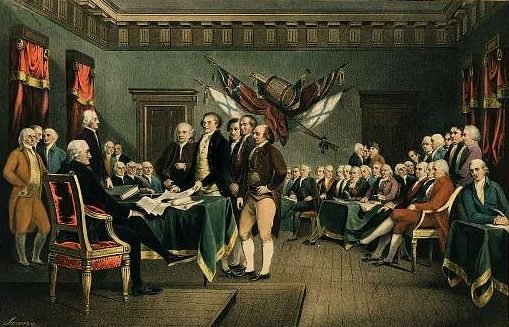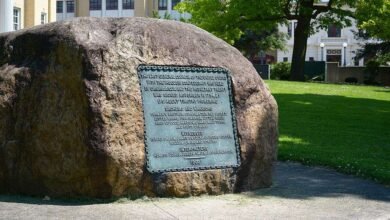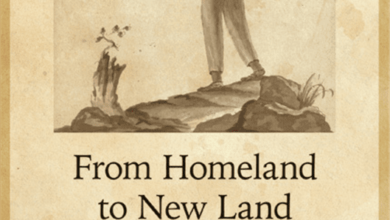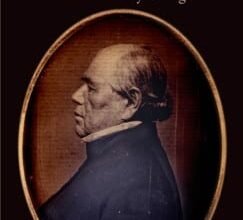What Really Happened on the Fourth of July


 On April 19, 1775, British Regulars and American minutemen fought at Lexington and Concord. There were casualties on both sides. A second battle was fought at Bunker Hill in June, the Continental Army with George Washington as commander was created, the British forts at Ticonderoga and Crown Point were captured by the colonists, King George III declared his colonies to be in a state of rebellion in August, Canada was invaded, and in May 1776 Congress learned that Britain had employed Hessian troops to fight their American cousins.
On April 19, 1775, British Regulars and American minutemen fought at Lexington and Concord. There were casualties on both sides. A second battle was fought at Bunker Hill in June, the Continental Army with George Washington as commander was created, the British forts at Ticonderoga and Crown Point were captured by the colonists, King George III declared his colonies to be in a state of rebellion in August, Canada was invaded, and in May 1776 Congress learned that Britain had employed Hessian troops to fight their American cousins.
Despite all that ensued, the Continental Congress still had not taken up the idea of independence, much to the dismay of the more radical delegates such as John and Samuel Adams and Virginia’s Richard Henry Lee.
But by early June 1776, public opinion had swung in favor of breaking away from Great Britain. On June 7, Lee introduced a resolution calling for a formal vote on independence. For two days, Congress debated the pros and cons of such a momentous step.
On June 11, the question was tabled for three weeks to allow time for delegates to receive instructions from home on how to vote, and for a five-member committee composed of John Adams, Thomas Jefferson, Benjamin Franklin, Roger Sherman of Connecticut, and Robert R. Livingston of New York to prepare a statement on independence. The group met several times until they ultimately asked Jefferson to write a draft which he completed in less than three days.
On June 28, after a few changes recommended by Adams and Franklin, the document was presented to Congress. They sat on it for three more days while awaiting word from the New York and Maryland delegations as to how they would vote.
Finally on Monday July 1, Congress began its deliberations with only the New York delegation absent. John Dickinson of Pennsylvania argued against independence, John Adams then spoke in favor of such a declaration. Procedural matters postponed a final vote until the next day.
On July 2, with Dickinson away, the vote was taken – 12-0 in favor of independence. New York did not vote because its delegates had not yet received their instructions from the Fourth Provincial Congress whose members were voted-in based upon their position on independence. They did not meet until July 9th.
The Second Continental Congress thus voted unanimously to declare independence from Great Britain on the evening of July 2, 1776.
The next morning, John Adams wrote to his wife Abigail that “The Second Day of July will be celebrated, by succeeding Generations, as the great anniversary Festival. It ought to be commemorated…with Pomp and Parade, with Shews, Games, Sports, Guns, Bells, Bonfires and Illuminations from one End of this Continent to the other from this Time forward forever more.”
So, what happened on July 4, 1776 since Congress had already voted in favor of independence two days earlier? Remember that document justifying such a step written primarily by Thomas Jefferson?
For two days Congress argued over language and edited it, reducing Jefferson’s piece by about a fourth, very much to his dismay. And at the insistence of Georgia and South Carolina, it also eliminated some of his more provocative statements especially about slavery.
Off to the printer it went and the Declaration of Independence, as we now know it, was distributed to the public in Philadelphia on July 4. On July 6, it was published for the first time in the Philadelphia Evening Post. The official celebration ordered by Congress took place on July 8th.
So, which day is the most significant? July 2, 4, or 8? Does it really matter? The Philadelphia Quaker Elizabeth Drinker makes no mention of it in her diary for July 4, 1776 but does record celebratory events in 1777 and 1778.
Another Philadelphian Christopher Marshall mentions the plot against Washington in New York City in his diary entry for July 4, 1776 and just a reference to the publication of the Declaration of Independence in the local newspaper. But he describes in some detail activities in town on July 8th.
Even Captain Frederick Mackenzie of the Royal Welch Fusiliers, while on duty in Rhode Island in 1777, acknowledges the “first Anniversary of the declaration of the Independency of the Rebel Colonies” in his diary for July 4th as well as the second anniversary in 1778.
Massachusetts, in 1781, was the first state to declare July 4th a holiday but the Congress of the United States did not act until 1870 to make that day a national holiday. Finally in 1941, FDR declared the Fourth of July a federal holiday.
Source link




